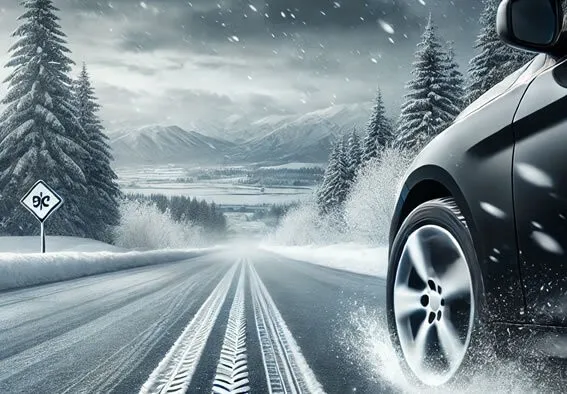Winter Braking: How to Stay Safe on Snow and Ice
February 15, 2025Braking in winter is an art, a science, and sometimes a heart-pounding experience. Let's break it down so you stay safe when roads turn into skating rinks.
Why Braking on Snow and Ice is Tricky
Unlike dry summer roads where your tires grip like a gecko on a wall, winter conditions reduce traction dramatically. On dry asphalt, your stopping distance at 50 km/h (31 mph) might be around 15 meters (49 feet). On a wet road, it could double. But on snow? Expect at least 35 meters (115 feet). Ice? It skyrockets beyond 70 meters (230 feet). That’s over four times the stopping distance of dry roads!
How to Brake on Snow and Ice
- Slow Down Early: Start braking much sooner than you normally would.
- Gentle Pressure: Apply brakes gradually to avoid skidding.
- ABS is Your Friend: If your car has Anti-lock Braking System (ABS), let it do its job—don't pump the brakes.
- Threshold Braking for Older Cars: If you don’t have ABS, pump the brakes lightly in short bursts.
- Steer into Skids: If you start sliding, steer in the direction of the skid to regain control.
Comparing to Summer Driving
Now, let’s talk about braking in summer. On a hot, dry road, stopping distances are at their shortest. But if the surface gets too hot—think 40°C (104°F) or more—the asphalt softens slightly, reducing grip. Not to mention, brake fade can become an issue.
Brake Rotors and Pads: The Hidden Victims
Braking on winter roads isn’t just tough on you—it’s tough on your car too.
- Cold Weather: Frequent braking in winter can cause condensation, leading to rust on rotors.
- Hot Summer Roads: Excessive heat can cause brake pads to glaze over, reducing their effectiveness.
- Thermal Cycling: Going from extreme cold to hot (such as braking hard after driving in snow) can cause cracks in rotors.
Final Thoughts
Adjusting your braking technique for different road conditions isn’t just a good idea—it’s essential. Whether you’re navigating icy streets or baking-hot highways, understanding how your brakes respond can make all the difference.


